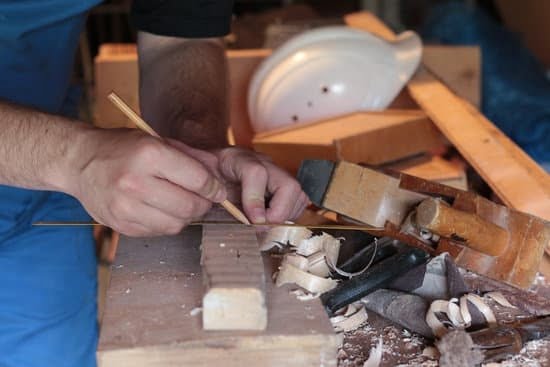Are sawhorses needed in a woodworking shop? Sawhorses are an essential tool for any woodworker, providing a sturdy and stable work surface for various projects. Whether you’re a beginner or an experienced craftsperson, having the right sawhorse can make a significant difference in the quality and efficiency of your work.
Sawhorses come in different types, including folding, traditional, and adjustable models. Each type has its own set of benefits and drawbacks, so it’s essential to understand which one suits your needs best. From holding lumber for cutting to supporting heavy materials during assembly, sawhorses are versatile and indispensable in woodworking projects.
In this article, we will explore the uses of sawhorses in woodworking projects, the benefits of using them in a workshop, factors to consider when choosing the right sawhorse for your needs, DIY options for woodworkers on a budget, and tips for setting up and using sawhorses safely. So whether you’re a professional carpenter or an amateur hobbyist, understanding the importance of sawhorses is crucial for creating a productive and safe woodworking environment.
Types of Sawhorses
Sawhorses are an essential component of any woodworking shop, providing a sturdy and stable surface for working on various projects. There are different types of sawhorses available, each with its own unique features and benefits. The three main types of sawhorses that are commonly used in woodworking shops are folding, traditional, and adjustable sawhorses.
Folding sawhorses are popular for their portability and space-saving design. They can be easily folded and stored away when not in use, making them ideal for small workshops or for woodworkers who need to transport their tools to different job sites. Traditional sawhorses, on the other hand, are the classic choice with a simple design consisting of four legs and a horizontal beam. They provide a reliable and stable work surface, perfect for heavy-duty woodworking tasks.
Adjustable sawhorses offer versatility and convenience, as they can be modified to different heights to accommodate various projects. This type of sawhorse is perfect for woodworkers who work on a wide range of projects with varying requirements. When choosing the right type of sawhorse for your workshop, it’s important to consider factors such as the size of your workspace, the nature of your woodworking projects, and your budget.
| Types of Sawhorses | Features |
|---|---|
| Folding Sawhorses | Portable, space-saving design |
| Traditional Sawhorses | Simple yet reliable work surface |
| Adjustable Sawhorses | Versatile and customizable height adjustments |
Uses of Sawhorses in Woodworking Projects
Sawhorses play a crucial role in woodworking projects, offering a stable and elevated surface for various tasks. Whether you are cutting, sanding, or assembling pieces of wood, sawhorses provide the necessary support and leverage to work efficiently. In this section, we will explore the diverse uses of sawhorses in woodworking projects and how they contribute to a productive and organized workshop.
Support for Cutting and Sanding
One of the primary uses of sawhorses in woodworking is providing a sturdy platform for cutting and sanding wood. By placing a flat board or sheet of plywood across two sawhorses, woodworkers can create an elevated work surface that allows them to make precise cuts with a handsaw or power tools. Additionally, sanding tasks become more manageable as the raised platform brings the work closer to eye level, reducing strain on the back and arms.
Temporary Workbench
When working on small or medium-sized woodworking projects, sawhorses can act as a makeshift workbench. By placing a solid door or large board on top of the sawhorse pair, woodworkers can create a temporary workbench for assembly and finishing tasks. This versatility makes sawhorses an essential tool for those working in limited space or transitioning between different projects in their workshop.
Carpentry Support
For carpenters and construction workers, sawhorses are indispensable for creating support structures while building frames, installing doors or windows, and performing various installation tasks. Their portability allows carpenters to easily transport them from one job site to another, providing reliable support wherever it is needed. Ultimately, there are countless uses for sawhorses in woodworking projects, making them an essential addition to any workshop.
Benefits of Using Sawhorses in a Woodworking Shop
Sawhorses are essential tools in any woodworking shop, providing stability and support for various projects. They are sturdy, reliable, and versatile, making them indispensable for woodworkers of all skill levels. Whether you are working on a small woodworking project or a large one, sawhorses provide a solid foundation for your work, allowing you to cut, sand, and assemble with precision and ease.
One of the main benefits of using sawhorses in a woodworking shop is their ability to hold large and heavy pieces of wood securely. This ensures safety in the workshop by preventing accidents or injuries caused by unstable work surfaces. Additionally, sawhorses elevate your workpieces off the ground, reducing strain on your back and allowing for more comfortable and efficient woodworking.
Furthermore, sawhorses can also be used as makeshift scaffolding for working at heights when needed. With the addition of a wooden plank across two sawhorses, you can create a temporary work platform that provides stability and support while working on elevated areas. This versatility makes sawhorses invaluable for various woodworking tasks and projects.
| Benefits | Importance |
|---|---|
| Sturdy support | Prevents accidents |
| Versatility | Elevates workpieces |
| Temporary scaffolding | Versatile use |
Remember to consider these benefits when deciding if adding sawhorses to your woodworking shop is necessary.
Factors to Consider When Choosing Sawhorses for Your Workshop
When setting up a woodworking shop, one of the key considerations is choosing the right equipment. Sawhorses are essential in any woodworking shop and choosing the right ones can make a significant impact on the quality and efficiency of your work. Here are some important factors to consider when choosing sawhorses for your workshop.
Material and Construction
The material and construction of sawhorses will determine their durability and weight-bearing capacity. Look for sawhorses made from sturdy materials such as steel, aluminum, or heavy-duty plastic. Consider factors like weight capacity, stability, and overall construction to ensure that the sawhorses can support the weight of the materials you’ll be working with.
Height and Adjustability
It’s important to consider the height of the sawhorses, especially if you’ll be using them to support large pieces of wood or other materials. Adjustable sawhorses offer flexibility in terms of height, allowing you to customize them based on your specific needs. This can be particularly useful for different types of projects and for woodworkers who require varying heights for comfort during work.
Portability and Storage
For woodworkers who have limited space in their workshops or need to transport their equipment, portability and storage are crucial factors. Folding or collapsible sawhorses are ideal for saving space when not in use and for easy transportation to different job sites. Consider how often you’ll need to move your sawhorses around or store them away when making your selection.
Considering these factors will help you choose the best sawhorses for your woodworking shop, ensuring that you have reliable supports for all your projects. By selecting sawhorses that meet your specific needs, you can enhance safety, efficiency, and productivity in your woodworking endeavors.
DIY Sawhorse Projects for Woodworkers on a Budget
If you’re a woodworker on a budget, building your own sawhorses can be a practical and cost-effective solution. Not only does it allow you to customize the size and design of the sawhorse to fit your specific needs, but it also gives you the opportunity to hone your woodworking skills. Here are some DIY sawhorse projects that you can consider for your woodworking shop:
- Traditional Sawhorse: This is the most common type of sawhorse and can be easily constructed using standard dimensional lumber. With just a few cuts and some basic joinery, you can create a sturdy and reliable support for your woodworking projects.
- Folding Sawhorse: For woodworkers with limited space, a folding sawhorse is a great option. By adding hinges and braces, you can create a collapsible sawhorse that can be easily stored when not in use.
- Adjustable Sawhorse: If you work with uneven surfaces or need varying heights for different projects, an adjustable sawhorse may be the best choice for you. This project involves creating an extendable or adjustable leg system to accommodate different working conditions.
When undertaking these DIY projects, it’s important to consider the strength and stability of the sawhorse. Ensure that all joints are securely fastened and that the legs are even to prevent any wobbling or instability during use.
Ultimately, building your own sawhorses not only saves money but also allows you to add a personal touch to your workshop. Whether it’s through customizing the dimensions or adding unique features, DIY sawhorses are both functional and rewarding for woodworkers on a budget.
Tips for Setting Up and Using Sawhorses Safely in the Workshop
Sawhorses are an essential tool in any woodworking shop, providing a stable and elevated platform to work on various projects. However, it’s important to set up and use sawhorses safely to prevent accidents and injuries. Here are some tips for ensuring the safe use of sawhorses in your workshop:
- Ensure Stability: When setting up your sawhorses, make sure they are on a level surface and securely locked into place. Shaky or wobbly sawhorses can lead to accidents, so it’s crucial to double-check their stability before placing any weight on them.
- Distribute Weight Evenly: When using sawhorses to support a workpiece, distribute the weight evenly across the length of the sawhorse. This will help prevent tipping or imbalance, especially when working with larger or heavier materials.
- Use Clamps: To further secure your workpiece on the sawhorse, consider using clamps to hold it in place. This will reduce the risk of the material shifting or sliding during the woodworking process.
It’s also essential to maintain a clean and clutter-free workspace around your sawhorses, as tripping over tools or debris can lead to accidents. Additionally, always wear appropriate safety gear such as goggles and gloves when working with power tools on or near your sawhorses.
By following these tips for setting up and using sawhorses safely in your workshop, you can ensure a secure and efficient workspace for all your woodworking projects. Remember that proper safety measures are just as important as skill when it comes to woodworking.
Conclusion
In conclusion, the verdict on whether sawhorses are needed in a woodworking shop is a resounding yes. Sawhorses are an essential tool for any woodworker, providing support and stability for a wide range of projects. Whether you are a hobbyist or a professional, having sawhorses in your workshop can greatly enhance your woodworking experience.
The various types of sawhorses available, including folding, traditional, and adjustable options, offer woodworkers flexibility and versatility in their workshop setup. The benefits of using sawhorses cannot be understated, as they provide a sturdy platform for cutting, sanding, assembling, and finishing projects. Additionally, when choosing sawhorses for your workshop, it is important to consider factors such as weight capacity, durability, and portability to ensure they meet your specific needs.
For woodworkers on a budget, DIY sawhorse projects provide an affordable option for creating customized supports tailored to individual project requirements. Setting up and using sawhorses safely in the workshop is crucial to prevent accidents and injuries. Following best practices and safety guidelines will help ensure that sawhorses remain an indispensable tool in any woodworking shop. Overall, the uses and benefits of sawhorses make them an essential addition to any woodworker’s toolkit.
Frequently Asked Questions
Do You Need a Sawhorse to Cut Wood?
A sawhorse can be a useful tool for cutting wood, especially when working on larger or longer pieces. It provides a stable surface to work on and can help support the weight of the wood as it is being cut. This can make the cutting process safer and more controlled.
What Is an Alternative to Sawhorses?
An alternative to sawhorses for cutting wood could be using a sturdy workbench or even creating a makeshift work surface with some plywood and clamps. Some people also use large plastic storage bins flipped upside down to serve as a make-shift sawhorse.
Are Saw Horses Worth It?
Whether saw horses are worth it depends on how often you work with wood and what type of projects you typically tackle. For someone who frequently cuts wood, especially larger pieces, investing in quality sawhorses could definitely be worth it for the added stability and safety they provide.
However, for occasional DIY projects, there may be other alternatives that would suffice without needing to invest in dedicated sawhorses.

Hi everyone! I’m a woodworker and blogger, and this is my woodworking blog. In my blog, I share tips and tricks for woodworkers of all skill levels, as well as project ideas that you can try yourself.





